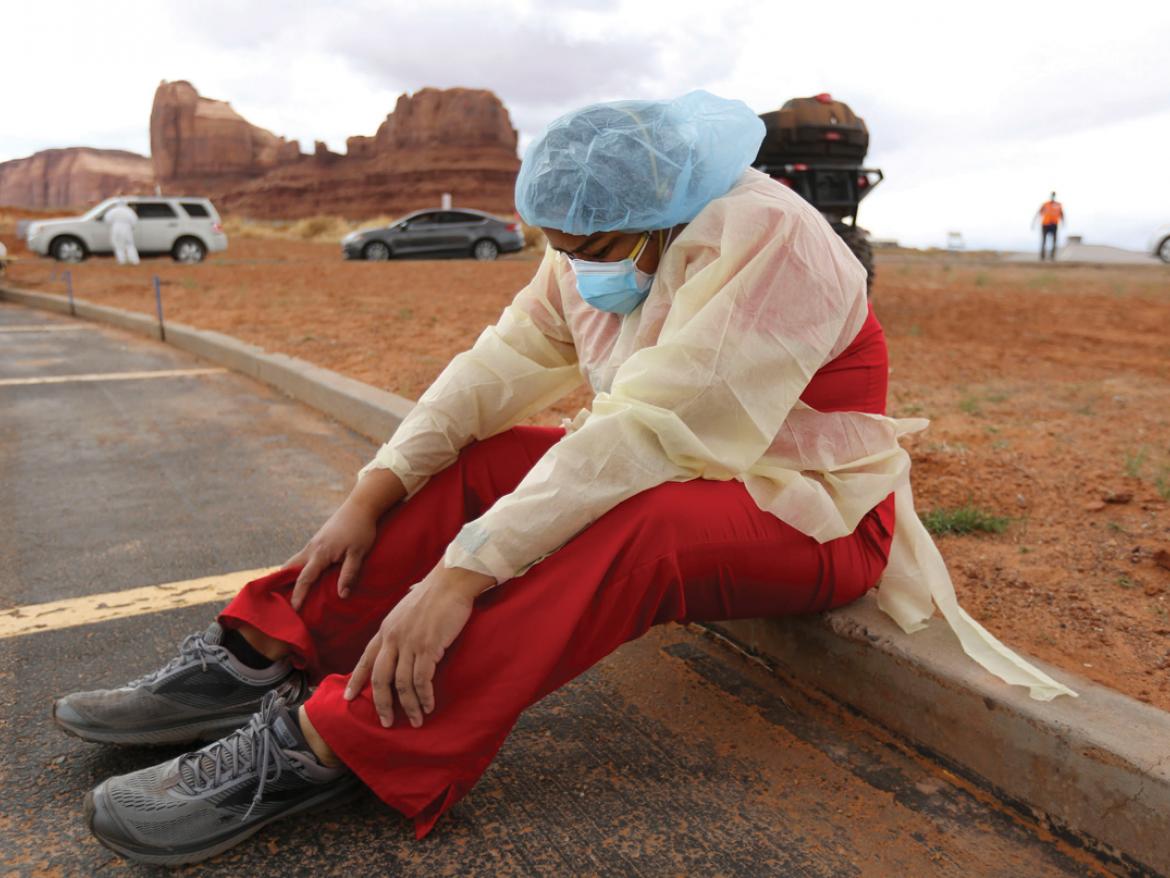Indian Country has been hit particularly hard by the COVID–19 pandemic. Native Americans, who currently number 9.7 million, have died from the virus at more than twice the rate of white Americans across the United States.
Elders, cultural knowledge keepers, and fluent speakers of endangered Native languages are among those lost. Even communities that made every effort to follow federal COVID–19 pandemic guidelines had unavoidable challenges to face.
Social distancing is difficult when up to five generations are living in one household. Frequent hand washing is impossible in areas without running water. Tribal economies were practically halted by shutdowns and stay-at-home orders. And even with recovery efforts, many tribal employees have not been called back to work.
Native Americans have died from the virus at more than twice the rate of white Americans across the United States.
The chronic underfunding of Indian Health Services (IHS) made personal protective equipment and adequate healthcare services scarce.
Tribal nations were largely left out of the development of the nation’s public health infrastructure, but the federal COVID-19 response and recovery legislation is changing that. The $2 trillion Coronavirus Aid, Relief, and Economic Security (CARES) Act allocated $10.3 billion to tribes, including $1 billion to the IHS.
This is as a part of the federal trust responsibility established in treaties between the federal government and tribal nations. This legal obligation requires the federal government to provide assistance to tribes, and Congress continues to work on legislation addressing these needs.
On August 10, the $1 trillion Infrastructure Investment and Jobs Act (H.R. 3684) passed the Senate, but the final version still awaits a House vote. It allocates an additional $11 billion to be invested in Indian Country for the following:
- $3.5 billion for the Indian Health Service Sanitation Facilities Construction Program
- $3 billion for the U.S. Department of Transportation Tribal Transportation Program
- $2.5 billion to address congressionally approved Indian water rights settlements
- $2 billion to expand broadband access on tribal lands and Hawaiian homelands
If passed by the House and signed into law, this will be one of the largest investments in Native communities in American history.
The federal government has always been aware of the glaring infrastructure needs in Indian Country, but the pandemic worsened those needs as the rest of the country shifted to telehealth, working from home, and distance learning for children.
Affordable broadband access has become essential to everyday life, but at least half of tribal households do not have access to broadband connectivity. As part of the proposed American Jobs Plan, President Joe Biden and many congressional leaders are determined to update the country’s infrastructure and make high-speed broadband available to all Americans. This includes the further expansion of broadband on tribal lands.
Through the Consolidated Appropriations Act of 2021, signed into law last December, new sources of tribal broadband funding is being provided through the Tribal Broadband Connectivity Program.
This is a $1 billion grant program for tribal governments, tribal organizations, tribal colleges and universities, the Native Hawaiian community, and Alaska Native Corporations.
As Congress continues to address the nation’s problems during the COVID-19 pandemic, it is critical that legislators do not forget Indian Country.
Including tribal nations in the decision-making process with meaningful tribal consultation and adequately funding tribal programs is key.

